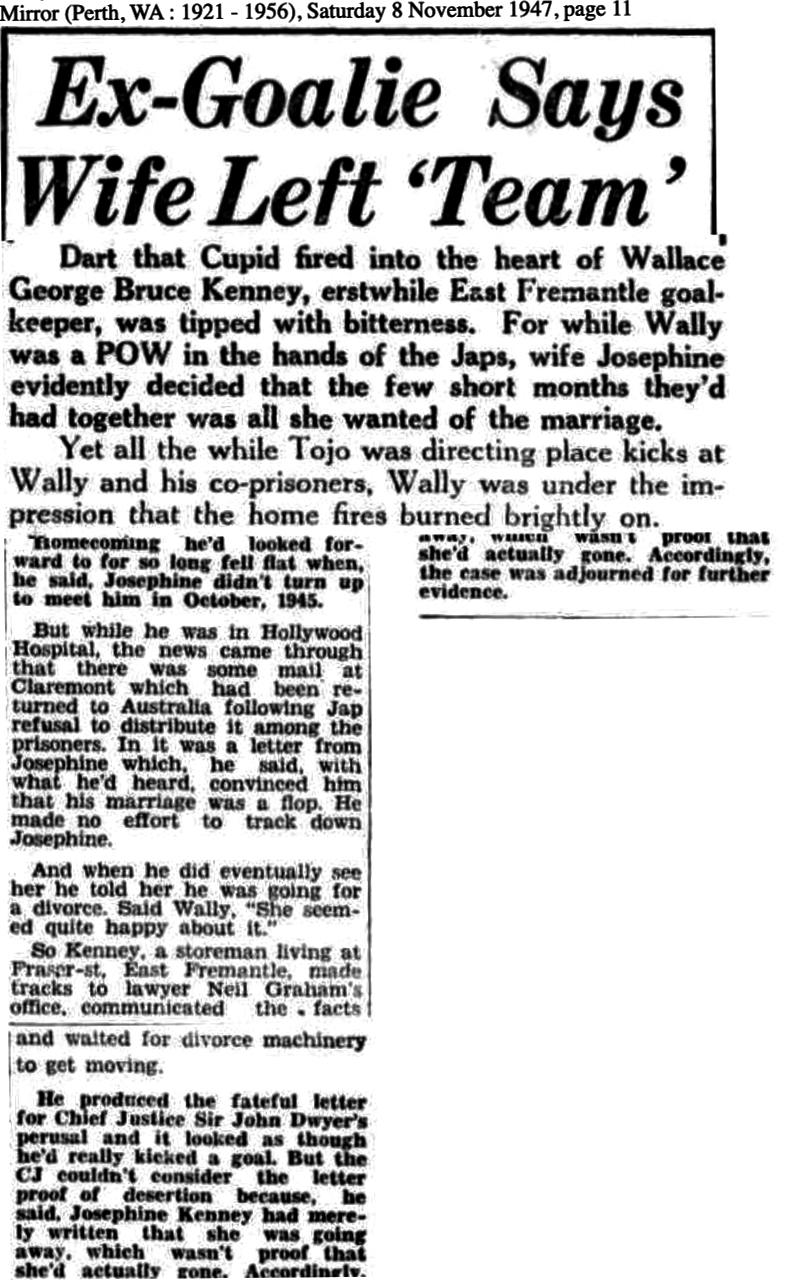The Soldier's Details

- Surname:
- Kenney
- First Name:
- Wallace George Bruce
- Nick Name:
- WALLY
- Rank:
- Corporal (promoted on 11.2.1942)
- Regimental #:
- WX8532
- Company:
- 'D' Company, 13 Platoon
- Enlisted:
- 18.10.1940
- Discharged:
- 8.03.1946
- DOB:
- 29.12.1913
- Place of Birth:
- Trafalgar, Western Australia
- Father's Name:
- Alexander Bruce Kenney
- Mothers's Name:
- Minnie Matilda Kenney (nee Wiliams)
- Religion:
- Church of England
- Pre-war Occupation:
- Health Quarantine Officer
- Singapore:
- Selarang Camp Changi, Thomson Road (Caldecot Hill Estate Camp), River Valley Road Camp, Selarang Barracks Changi, Changi Gaol Camp
- Return Details 1945:
- Singapore-Melbourne, 1st Netherlands Military Hospital Ship Oranje
General Description
Wally Kenny enlisted AIF Oct 1940 later joined ‘D’ Coy 13 Platoon and was Corporal to CO Lt Wankey.
13 Platoon was one of first to be overrun by the Japanese during their initial landing. Please read further.
Kenney was admitted to 2/13th Australian General Hospital with a shrapnel wound to his right arm. Transferred to No. 2 Convalescent Depot on 12/2/1942 and discharged to unit on 20/2/1942.
He remained at Singapore throughout the war – reason is unknown whether because of his skills or his health.
He returned to Australia via Melbourne by 1st Netherlands Military Ship ‘Oranje’.
Wally was born Boulder 1913 to parents Alexander Bruce Kenney b. 1877 Dungog, NSW and Minnie Matilda Williams who married Boulder 1909.
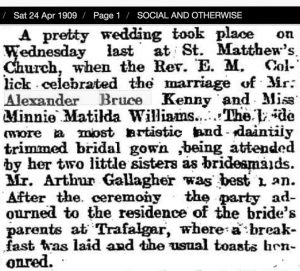
Wally’s father Alexander Bruce Kenney was KIA France Aug 1917.
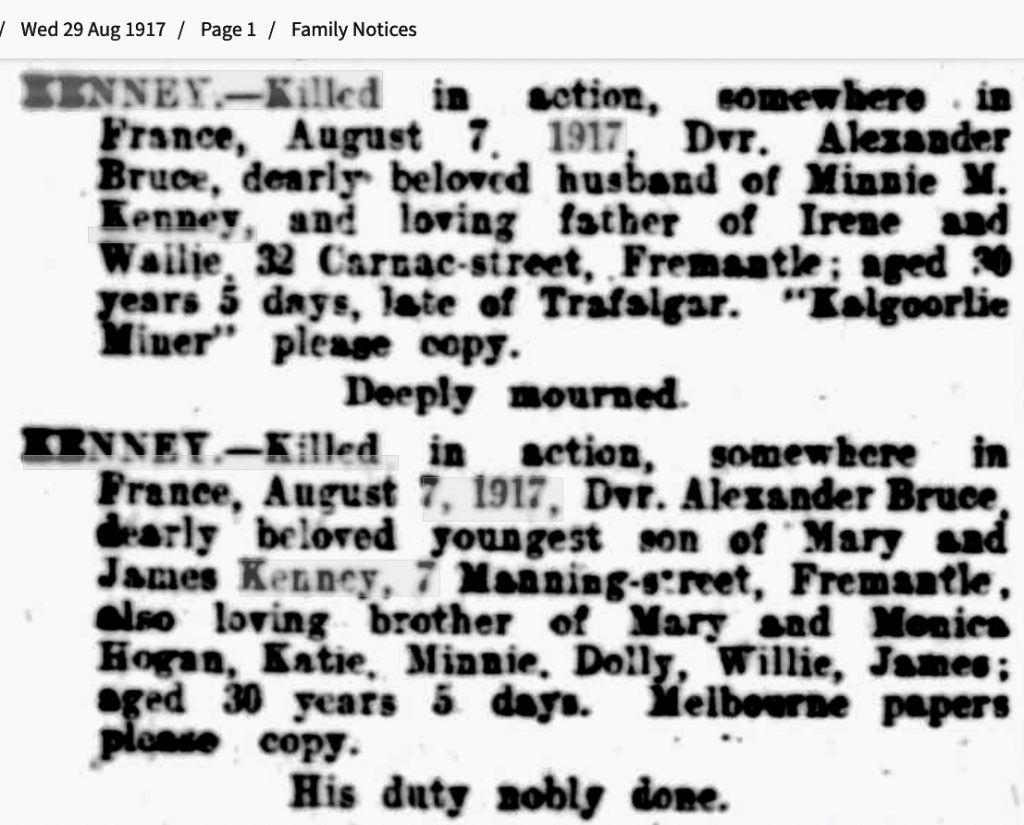

Wally’s Gmother Minnie Matilda Williams died Sep 1922. Wally Kenney’s mother is daughter to Minnie Kenney
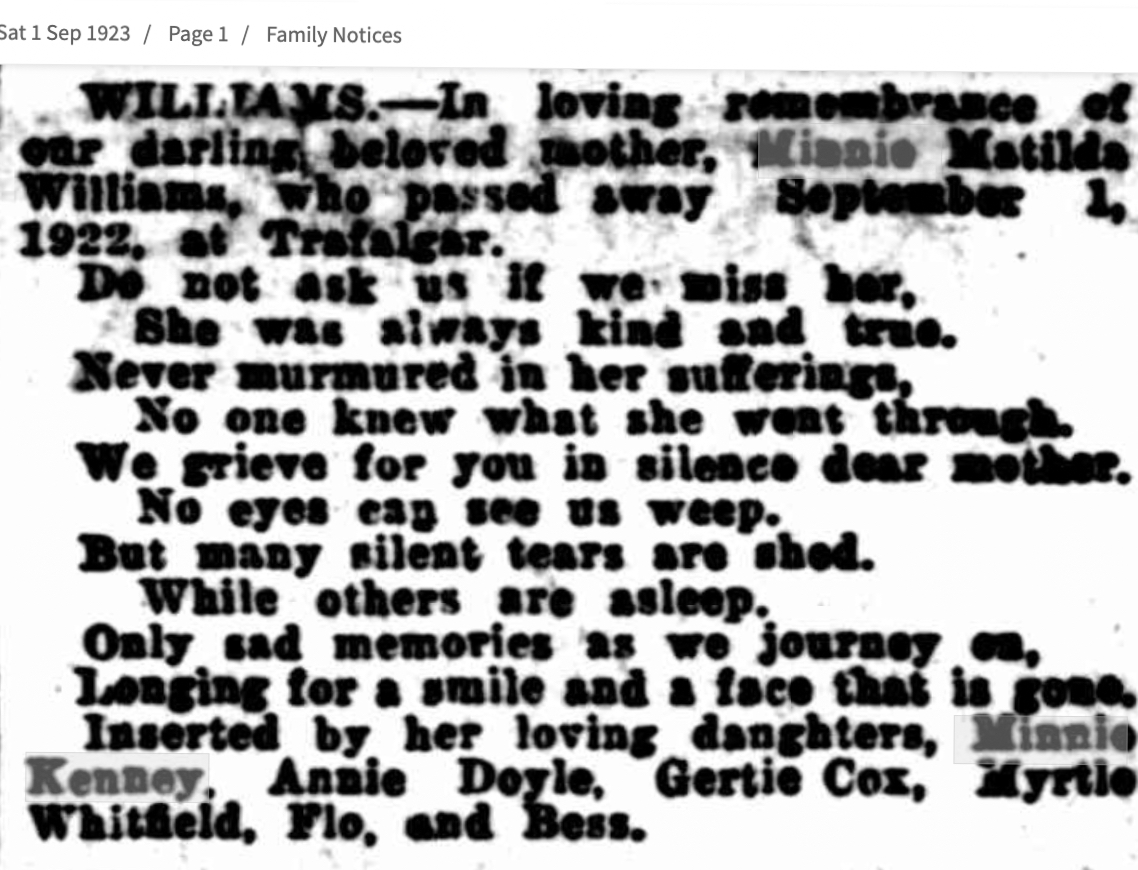
Below: Widow Minnie Kenney’s father Thomas Henry Williams died just a few years after his wife.
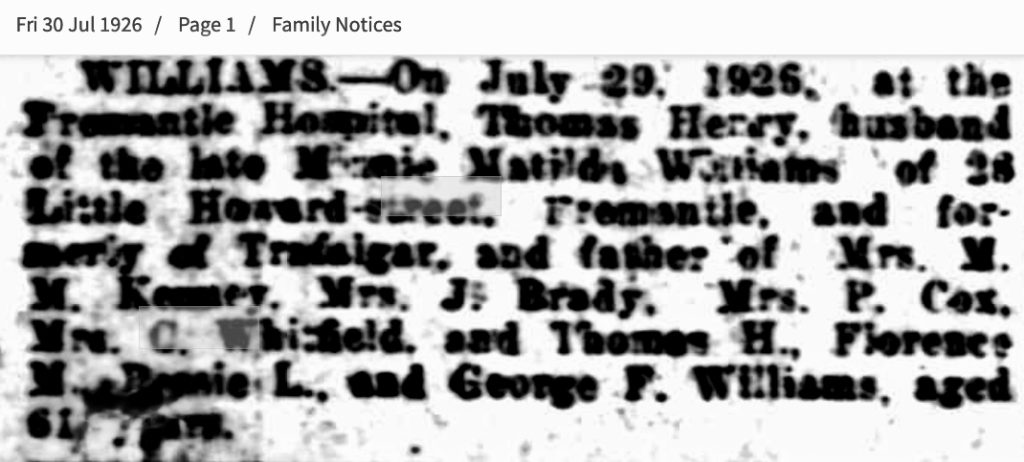
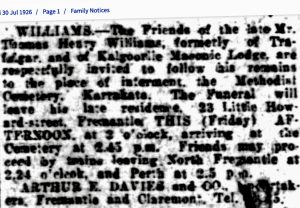
Kenney’s Gmother Mary Scholastica Thecla Kenney (nee Walker) born NSW married 1873 NSW to James Kenney i.e. mother of his father Alexander, died 1933 with a notice from Wally’s Football Club. Mary and James had 13 children.
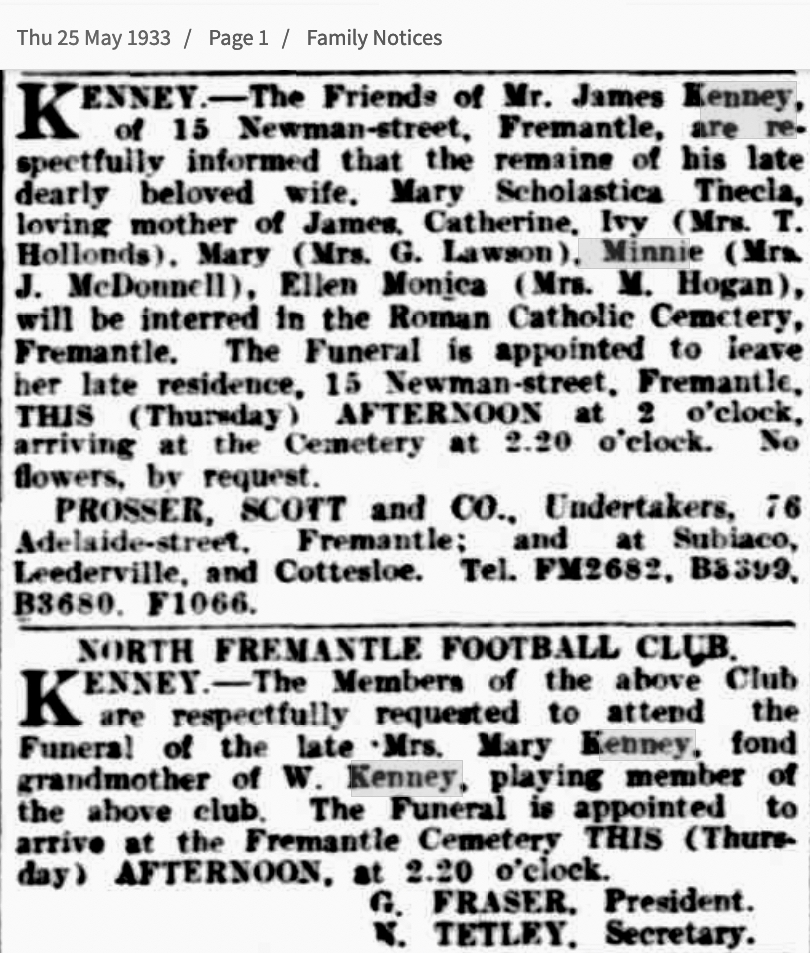
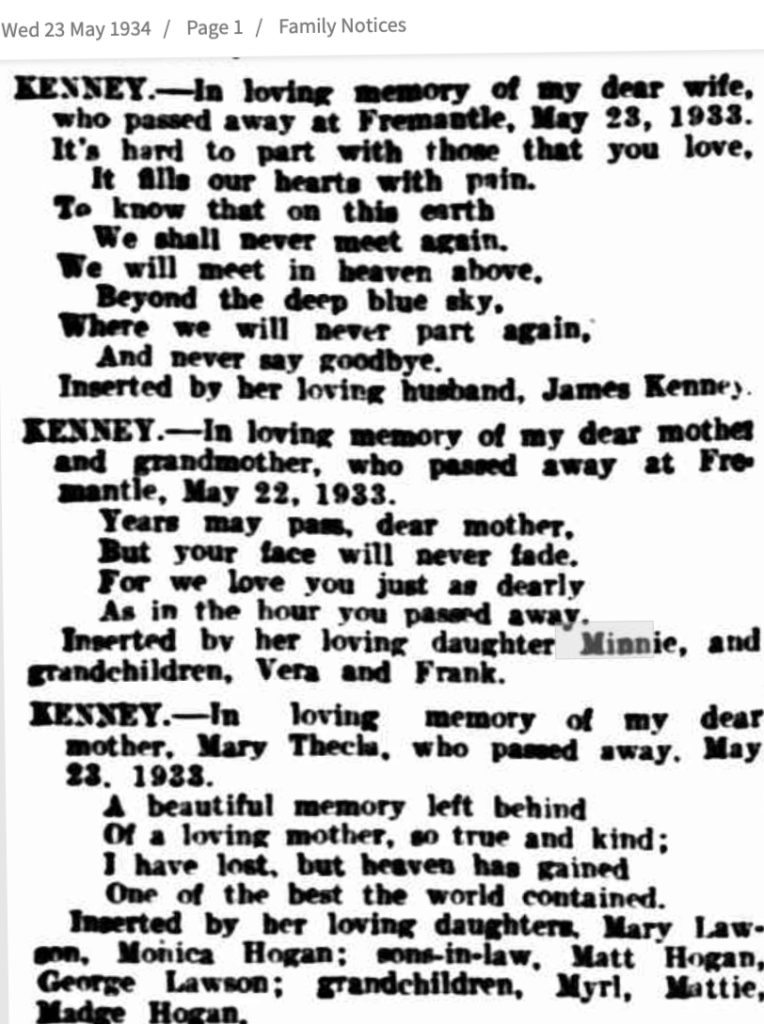
James Kenney born Maitland, NSW died 1936 Fremantle aged 86 years.
Wally was one of two children, and had an older sister Irene.
In 1915 WW1 Alexander Kenney enlisted at Blackboy Hill Service No. 4286. He later transferred to 16th Battalion and was KIA Belgium 1917. He had been working as a miner in Boulder prior to enlisting. Born NSW Alexander was quite tall standing 5′ 10″.
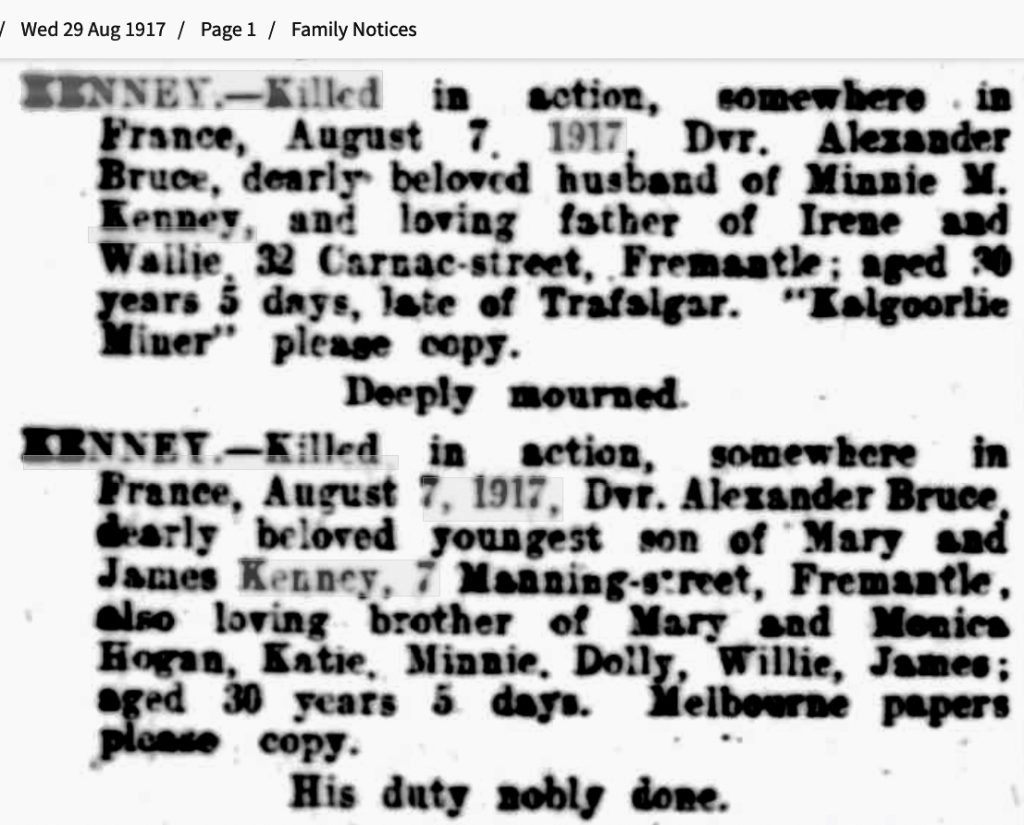

Above: Wally’s widowed mother Minnie Kenney remarries in 1940.
At the end of WW2 Wally Kenney was one of the unfortunate soldiers who returned home to find their marriage was over.
Kenney married to Josephine Chalsty in 1940 prior to enlisting with AIF 18 Oct 1940. The marriage ended in divorce in 1947.
In 1949 Kenney remarried to Patricia Mary Shanahan.
In 1958 Patricia and Wally were residing Canning Highway, East Fremantle, Wally working as a steward.
In 1958 the Kenneys were residing Melville and Wally was working as a steward.
Kenney died 3/10/1962 aged 46 years. Patricia died July 1989. It is not known if they had children.
——————-
Below: From Wally’s father’s WW1 military file – contains letter from Alexander’s mother applying for him to return to home to Australia as the family needed his support. This extraordinary story tells us Alexander was KIA before he could be repatriated back to Australia for family reasons. Worse was Alexander should not have been in France fighting – he had stowed away to fight in the field in place of Driving.
Driver WW1: Driver was a rank used in the Royal Australian Artillery that was equivalent to the rank of Private. After the First World War, the rank was redesignated to Gunner. Whilst some Drivers did drive horses which pulled wagons carrying artillery guns, ammunition or supplies, the rank itself is not necessarily indicative of this role. Given that he was designated this unit during initial service with Field Artillery Brigades rather than with an infantry unit, I am unable to confirm this was his role. This information from. AWM 2023.


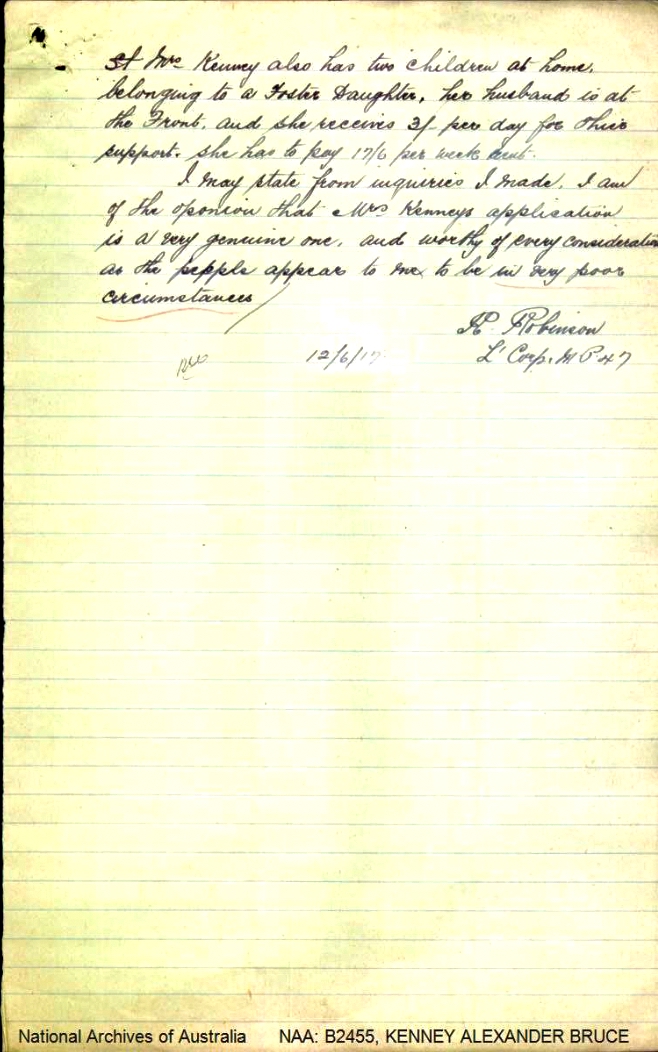
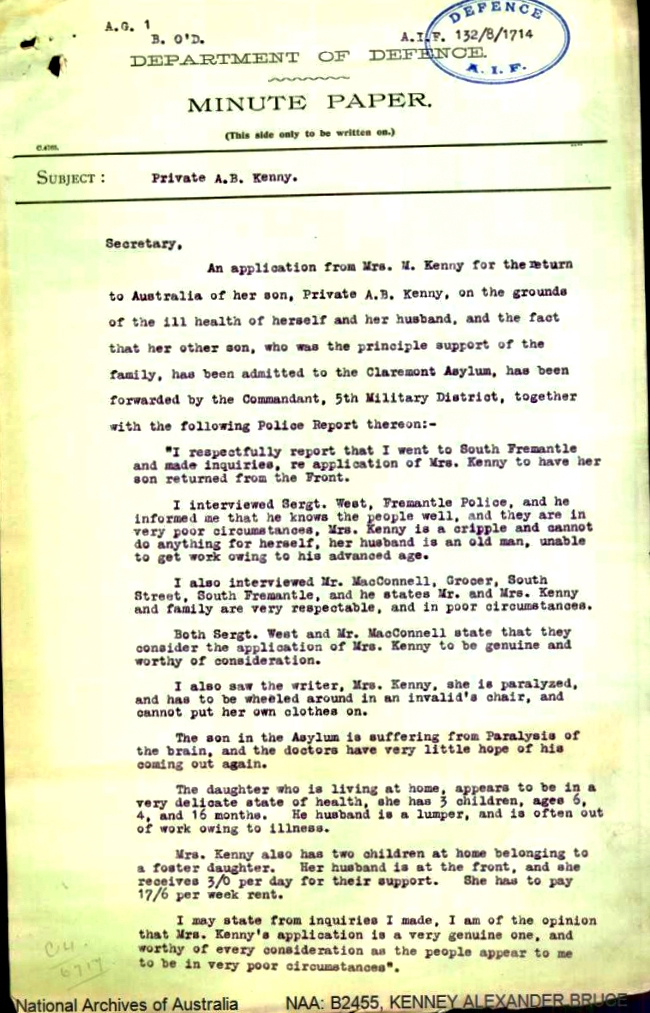

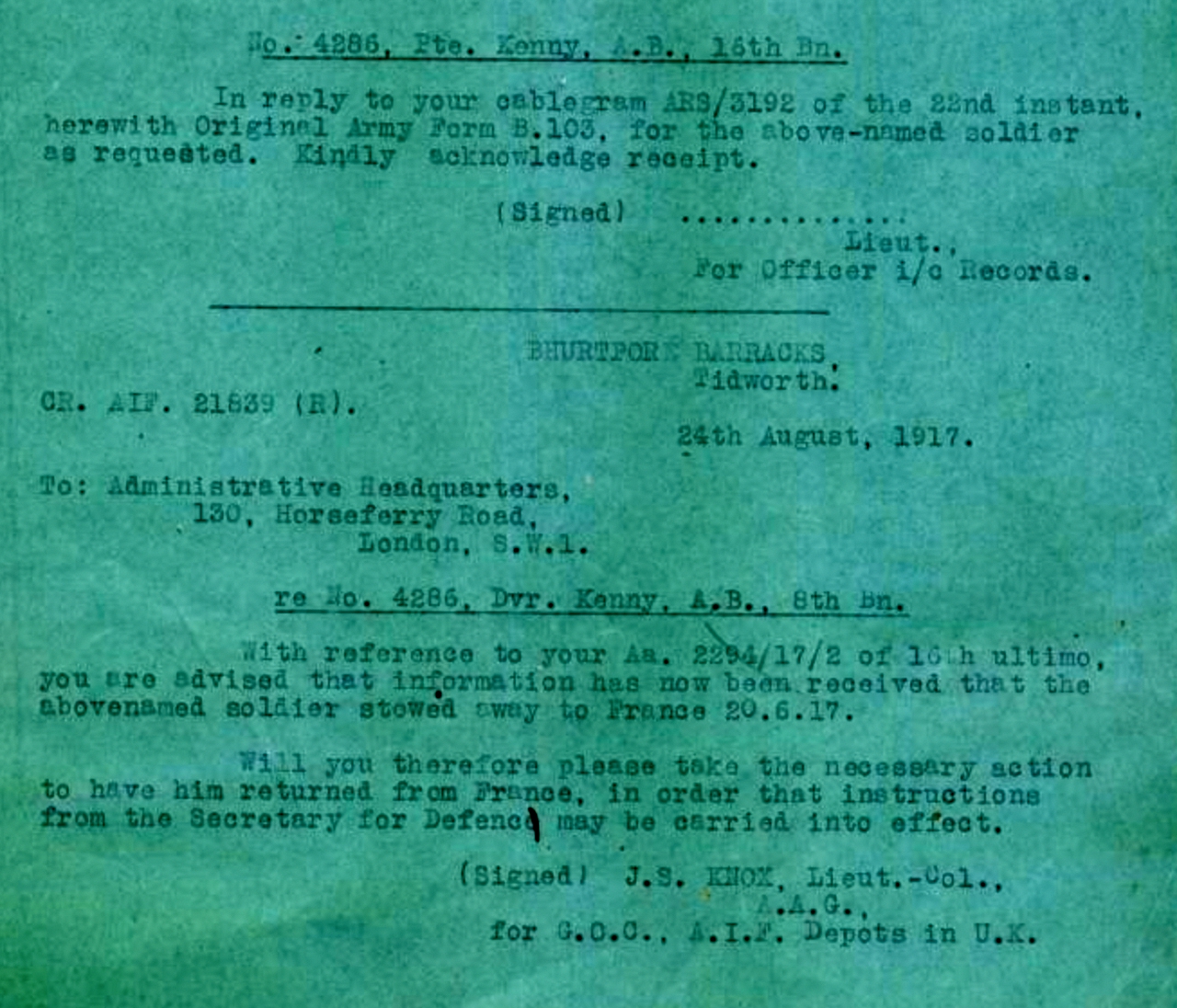

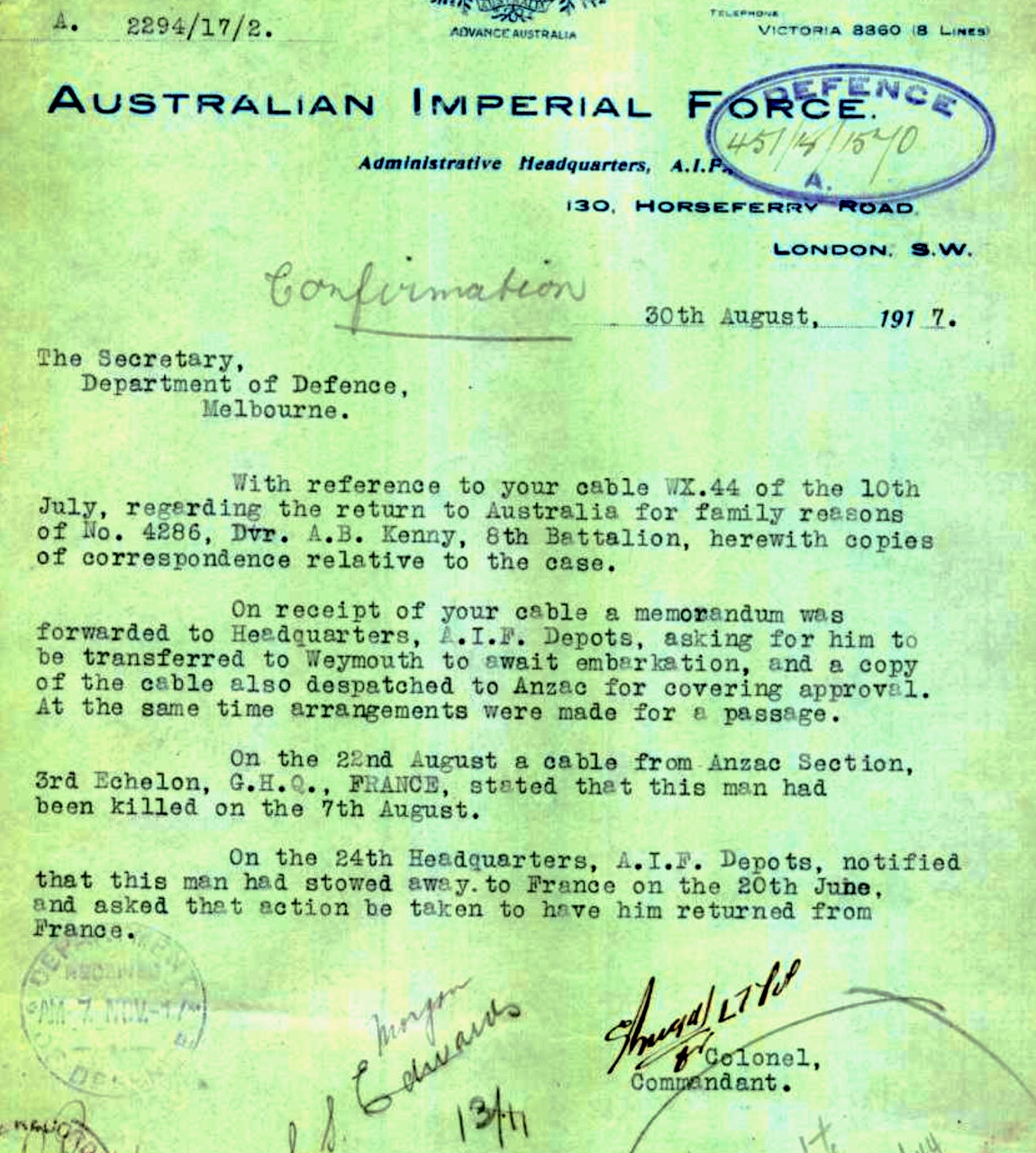
The 16th Battalion AIF was raised from 16 September 1914, six weeks after the outbreak of the First World War. Three-quarters of the battalion were recruited in Western Australia, and the rest in South Australia. With the 13th, 14th and 15th Battalions it formed the 4th Brigade commanded by Colonel John Monash.
The South Australian and Western Australian recruits were united when the battalion trained together in Victoria. They embarked for overseas on Boxing Day. After a brief stop in Albany, Western Australia, the battalion proceeded to Egypt arriving in early February 1915. Australia already had an AIF division there, the 1st. When the 4th Brigade arrived in Egypt it became part of the New Zealand and Australian Division. The 4th Brigade landed at ANZAC late in the afternoon of 25 April 1915.
A week after the landing the 16th was thrown into the attack on Bloody Angle suffering many casualties. From May to August the battalion was heavily involved in establishing and defending the front line of the ANZAC beachhead, and in August the 4th Brigade attacked Hill 971. The hill was taken at great cost, although Turkish reinforcements forced the Australians to withdraw. The battalion served at ANZAC until the evacuation in December.
After the withdrawal from Gallipoli, the battalion returned to Egypt. While there the AIF expanded and was reorganised. The 16th Battalion was split and provided experienced soldiers for the 48th Battalion. The 4th Brigade was combined with the 12th and 13th Brigades to form the 4th Australian Division.
In June 1916 they sailed for France and the Western Front. From then until 1918, the battalion took part in bloody trench warfare. Its first major action in France was at Pozieres in the Somme valley, where Private Martin O’Meara won the battalion’s first Victoria Cross. The battalion spent much of 1917 in Belgium advancing to the Hindenburg Line. The battalion, along with most of the 4th Brigade, suffered heavy losses at Bullecourt in April, when the brigade attacked strong German positions without the promised tank support. In March and April 1918, the battalion helped to stop the German Spring offensive. At Hamel in June, Lance Corporal Tom Axford was awarded the battalion’s second Victoria Cross. The battalion participated in the great allied offensive of 1918, fighting near Amiens on 8 August 1918. This advance by British and empire troops was the greatest success in a single day on the Western Front, one that German General Erich Ludendorff described as ‘..the black day of the German Army in this war’. In late August Lieutenant L. D. “Fats” McCarthy won what became known as the “super VC”.
The battalion continued operations until late September. At 11 am on 11 November 1918, the guns fell silent. In November 1918, members of the AIF began to return to Australia for demobilisation and discharge.
Wally’s father Alexander Bruce Kenney was KIA France 7 Aug 1917 Belgium (believed to Ypre region).
Camp Locations:
- Changi Gaol Camp - Singapore
- River Valley Road Camp - Singapore
- Selarang Barracks Changi - Singapore
- Selarang Camp Changi - Singapore
- Thomson Road (Caldecot Hill Estate Camp) - Singapore

